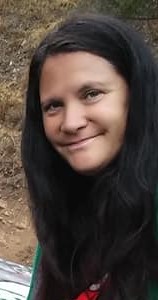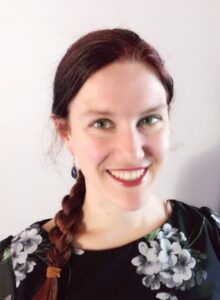A look at The Curious Incident of the Dog in the Nighttime, The Big Bang Theory, Mary and Max and other portrayals of autistic people in the media
By Baylie Nixon
As posted on The Art of Autism website, Warner Brothers is having auditions for a film adaptation of “The Curious Incident of the Dog in the Nighttime”. I found this play, which I saw in December 2018, to be an intense narrative that invoked many powerful emotions. I can only hope the rest of the audience had a similar reaction, because I think the play captured some of the autistic experience well enough to give the non-autistic viewers a reasonable glimpse.
Before I continue, however, a mild spoiler alert regarding character personalities for those not familiar with this story.
The intent of the play is to accentuate how autism affects the main character’s motives and personality. The idiosyncrasies demonstrated by the main character, Christopher, appear to me as a fairly stereotypical textbook description of a speaking autistic. This is understandable to an extent, because most of society is still only aware of us in ways that the textbooks and media have portrayed us.
In spite of his stereotyped character, I found him very endearing and an acceptable representative of many autistics. And even though some portrayals of his autistic traits felt exaggerated, others felt spot on: namely, how the world around him was intense and almost unbearable at times. In the version of the play I saw, the lighting, sounds, and behaviors of other actors were meant to show how sensory overload can be overwhelming. Christopher’s meltdowns made me think of some I’ve experienced, especially in childhood and adolescence.
Another accurate portrayal is how people’s treatment of Christopher ranged from benevolence to impatience to maliciousness.
For example, Christopher’s teacher and some of his neighbors seemed patient and did their best to understand Christopher rather than make him conform to their expectations of what a social interaction “should” look like. In contrast to his kind teachers and neighbors, his father and step-father were quick to anger at Christopher’s social misunderstandings and dismiss his emotional hardships. This is especially true in situations that wouldn’t be as stressful for neurotypicals. Although many people may experience this type of treatment, the intense manner in which Christopher experiences the world had a much deeper impact on him.
The way these characters treated Christopher reminded me of how I’d often become frightened when someone would get upset with me, seemingly from out of the blue.
Even though it doesn’t happen nearly as often, the fear I experienced led to intense self-esteem problems, trust issues, and people-pleasing behaviors. In addition to my own experiences, I have found that it is very common for autistics to be at the receiving end of apparent surprise anger and frustration. The consequences of this anger, whether it’s justified or not, is that we eventually end up hypervigilant and scared of upsetting others even over the most minor mistakes.
We autistics tiptoe around the minefield of neurotypical social expectations while our needs and way of socializing are often ignored or pathologized. This fear is made worse when autistics experience bullying (and the recommendation to act “less weird” or “not be an easy target,” to avoid the bullying really doesn’t help). One of the greatest things about this play is how it sheds light on this struggle in a way that is neither comical nor patronizing. The character’s suffering isn’t meant to be ridiculed by the audience. It is not uncommon for autistic (or autistic-coded) characters to have their stress and idiosyncrasies be a source of comedy or exotification.
One well-known example is The Big Bang Theory (I bet some of you saw this example coming from a mile away). I’ll admit, I’m not so uptight that I don’t see any humor in the way we can conduct ourselves; I was (and still sort of am) a huge fan of The Big Bang Theory when I was a senior in high school—right around the time my neurodiversity activism was taking off. When Sheldon’s more benign (as in not rude or pretentious) quirks would surface, I felt I was comfortably laughing at myself.
The comedy gets inappropriate, in my opinion, when our genuine struggles are played for laughs. Since The Big Bang Theory is a well-known example of autistic caricature, I’m not going to cover it any further and instead move to a better example: the film Mary and Max.
Major Spoilers for this film Mary and Max ahead.
The autistic main character, Max, is canonically diagnosed with Asperger’s and demonstrates panic attacks, loneliness, poor coping mechanisms, difficulty with emotional processing, and anger at his friend.
The problems he has appear to me to be demonstrated in a rather mocking tone; making it look like he’s pathetic for having mental health struggles. Such portrayal of mental health, let alone autism, would not be tolerated by society today. At the end of the film, Max dies from his poor health, brought on by his lifestyle – just as Mary was arriving to meet him.
To me, his last moments come off as bittersweet. Even though his pen-pal finally came to visit, he for the most part, died alone. After the first time I watched Mary and Max, I felt depressed, uncomfortable, and disempowered. After the second time, I felt a slight outrage as my life experiences made me view the film as inappropriate for modern times (it came out in 2009) rather than feeling there was something inherently wrong with being autistic. All that being said, I don’t think the writer/director of Mary and Max intended for the film to come off as ableist; rather I think it was likely due to misunderstanding from an otherwise well-meaning creator.
In spite of the issues autistics still endure regarding media representation, there have been great improvements in the last decade. TV shows such as Sesame Street, Arthur, The Good Doctor, and arguably Atypical seem to strive for accurate and inclusive representation.
In addition to representation in fiction, autistic advocates in real life are speaking louder than ever before. Even non-autistic supporters such as Steve Silberman, author of Neurotribes, have trail-blazed new paths to autistic inclusion.
The trend I witness regarding how neurodiversity is treated by society is overall a positive one. There are still issues regarding being misunderstood and marginalized; but the more mainstream neurodiversity acceptance becomes, the happier and more motivated I feel to contribute my differences to society.

My name is Baylie Nixon. I am currently living with my family while I volunteer for an organization called Living Opportunities and study in post-bacc school. I am on the autism spectrum, diagnosed with Aspergers before the DSM V was published, and have been a strong advocate for autistic inclusion since I was a junior in high school. My activism really took off during senior year of high school when I did my senior project on neurodiversity, and then later in college I was in charge of a neurodiversity club for a year.
I recently graduated from Oregon State University with a BS in Pre-Clinical Lab Science, and I am currently enrolled in further education in order to be certified as a medical technologist. I have lived in Southern Oregon for half my life, while also having lived in Forest Grove to go to Pacific University for a couple years, spending another couple back home at Southern Oregon University, then finally finishing my bachelor’s in Corvallis. I am absolutely in love with the biomedical sciences, and am excited to put my knowledge and passion to good use. I am also an Etsy jeweler, my shop is called “Bao Treasures,” and its logo is a rainbow bird. I have been making jewelry for roughly half my life.









I too love The Good Doctor!